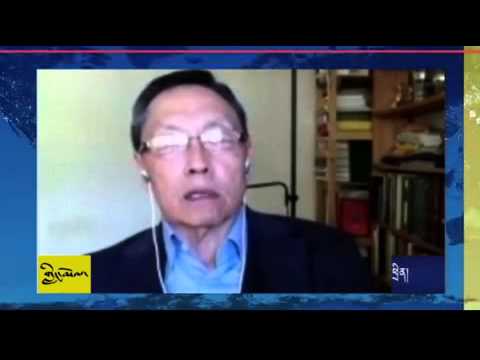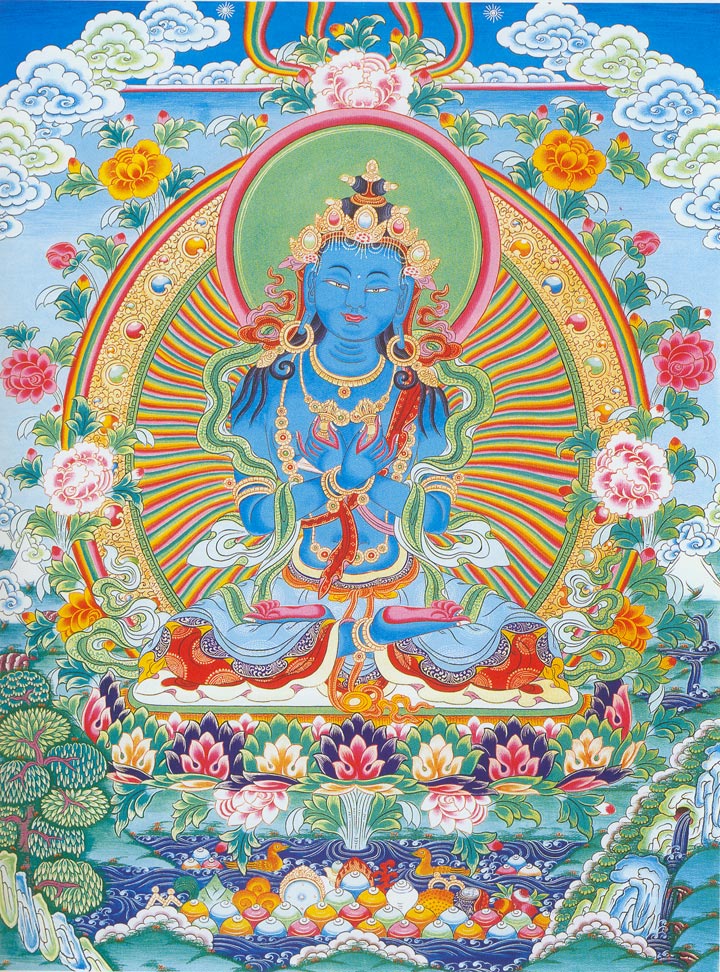|
Samten Migdrön
Samten Migdrön (; alternate nomenclature ) is a Tibetan text of historical importance for the historical relationship of Dzogchen and Zen as well identifying the view of its author, Nubchen Sangye Yeshe. Namkhai Norbu ''et al.'' (1986: p. 23) identify Nubchen Sangye Yeshe as the author of a treatise, ''Samten Migdrön'' (Tib. ''bsam gtan mig sgron''). Dalton (2003: unpaginated) in his introduction to the Anuyoga literature of the Nyingma states that: Nubchen Sanggyé Yeshé is renowned for having preserved a number of tantric lineages through the so-called “dark period” of Tibetan history (roughly 842-978 C.E.), when state-supported monastic Buddhism fell into decline. Nubchen authored many works, including the ''Lamp for the Eye in Contemplation'' (''bsam gtan mig sgron''), an extensive discussion of early Tibetan contemplative systems. Samten Gyaltsen Karmay wrote on the Samten Migron. The Total Sphere in Six Aspects In the Samten Migdron, the 'Total Sphere' (thig ... [...More Info...] [...Related Items...] OR: [Wikipedia] [Google] [Baidu] |
Dzogchen
Dzogchen ( 'Great Completion' or 'Great Perfection'), also known as ''atiyoga'' ( utmost yoga), is a tradition of teachings in Indo-Tibetan Buddhism and Bön aimed at discovering and continuing in the ultimate ground of existence. The goal of Dzogchen is the direct experience of this basis, called (Sanskrit: ). There are spiritual practices taught in various Dzogchen systems for discovering . Dzogchen emerged during the first dissemination of Buddhism in Tibet, around the 7th to 9th centuries CE. While it is considered a Tibetan development by some scholars, it draws upon key ideas from Indian sources. The earliest Dzogchen texts appeared in the 9th century, attributed to Indian masters. These texts, known as the Eighteen Great Scriptures, form the "Mind Series" and are attributed to figures like Śrī Siṅgha and Vimalamitra. Early Dzogchen was marked by a departure from normative Vajrayāna practices, focusing instead on simple calming contemplations leading to a di ... [...More Info...] [...Related Items...] OR: [Wikipedia] [Google] [Baidu] |
Nubchen Sangye Yeshe
Nubchen Sangye Yeshe (Tib:གནུབས་ཆེན་སངས་རྒྱས་ཡེ་ཤེས, Wylie: gnubs chen sangs rgyas ye shes, Chinese: 努千桑傑耶喜, Pinyin: Nǔqiān Sāngjié Yéxǐ) (9th century) was one of the twenty-five principal students of Guru Padmasambhava, revealer of Vajrayana and founder of the Nyingma school and of Tibetan Buddhism. Nubchen Sangye Yeshe is considered an important figure in the development of the White Sangha of lay yogis, the Ngakpas and Ngakmas. Crazy wisdom Terton Tsasum Lingpa (17th century) was a reincarnation of Nubchen Sangye Yeshe. Teachers As well as his fame as one of the 25 principal disciples of Padmasambhava, Nubchen Sangye Yeshe is held in different sources to have been a direct disciple of Shri Simha, Vimalamitra, Kamalashila, Dhanadhala, Tshaktung Nagpo, Shantigarbha, Dhanasamskrita, Shakyadeva, Dhanarakshita, the Brahman Prakashalamkara, Dharmabodhi, Dharmaraja, Tsuglag Pelge, Acarya Vasudhara, ... [...More Info...] [...Related Items...] OR: [Wikipedia] [Google] [Baidu] |
Namkhai Norbu
Namkhai Norbu (; 8 December 1938 – 27 September 2018) was a Tibetan Buddhist master of Dzogchen and a professor of Tibetan and Mongolian language and literature at Naples Eastern University. He was a leading authority on Tibetan culture, particularly in the fields of history, literature, traditional religions (Tibetan Buddhism and Bon), and Traditional Tibetan medicine, having written numerous books and scholarly articles on these subjects. When he was two years old, Norbu was recognized as the mindstream emanation, a tulku, of the Dzogchen teacher Adzom Drugpa (1842–1924). At five, he was also recognized as a mindstream emanation of an emanation of Shabdrung Ngawang Namgyel (1594–1651). At the age of sixteen, he met master Rigdzin Changchub Dorje (1863–1963), who became his main Dzogchen teacher. In 1960, he went to Italy at the invitation of Giuseppe Tucci and served as Professor of Tibetan and Mongolian Language and Literature from 1964 to 1992 at Naples Eastern U ... [...More Info...] [...Related Items...] OR: [Wikipedia] [Google] [Baidu] |
Anuyoga
Anuyoga (Devanagari: अनुयोग 'further yoga') is the designation of the second of the three Inner Tantras according to the ninefold division of practice used by the Nyingma school of Tibetan Buddhism. This schema categorizes various stages of practice, and Anuyoga specifically emphasizes the completion stage of Tantra. As with the other yanas, Anuyoga represents both a scriptural division as well as a specific emphasis of both view and practice. Anuyoga delves into inner practices involving the subtle body, chakras, prana (subtle energies), nadis (energy pathways), and consciousness (bindu). It is particularly suited for individuals whose primary obstacle is passion and is associated with the feminine principle. The central view of Anuyoga revolves around realizing the essence of the 'Threefold Maṇḍala of Samantabhadra,' comprising 'empty basic space', 'wisdom', and the 'union of emptiness and wisdom'. The Anuyoga category can be further divided into four root sutras ... [...More Info...] [...Related Items...] OR: [Wikipedia] [Google] [Baidu] |
Nyingma
Nyingma (, ), also referred to as ''Ngangyur'' (, ), is the oldest of the four major schools of Tibetan Buddhism. The Nyingma school was founded by PadmasambhavaClaude Arpi, ''A Glimpse of the History of Tibet'', Dharamsala: Tibet Museum, 2013. as the first translations of Buddhist scriptures from Pali and Sanskrit into Tibetic languages, Tibetan occurred in the eighth century. The establishment of Tibetan Buddhism and the Nyingma tradition is collectively ascribed to Khenpo Shantarakshita, Guru Padmasambhava, and King Trisong Detsen, known as ''Khen Lop Chos Sum'' (The Three: Khenpo, Lopon, Chosgyal). The Nyingma tradition traces its Dzogchen lineage from the Adi-Buddha, first Buddha Samantabhadra to Garab Dorje, and its other lineages from Indian mahasiddhas such as Sri Singha and Jnanasutra. Yeshe Tsogyal recorded the teachings. Other great masters from the founding period include Vimalamitra, Vairotsana, and Buddhaguhya. The Nyingma tradition was physically founded at Samye ... [...More Info...] [...Related Items...] OR: [Wikipedia] [Google] [Baidu] |
THDL
The Tibetan and Himalayan Library (THL), formerly the Tibetan and Himalayan Digital Library (THDL), is a multimedia guide and digital library hosted by the University of Virginia focused on the languages, history and geography of Tibet and the Himalayas. The THL has also designed a scholarly transcription for Standard Tibetan known as the THL Simplified Phonetic Transcription. Overview THDL was established in 2000 in association with the University of Virginia Library and the Institute for Advanced Technology in the Humanities, using the innovative Fedora Commons (Flexible Extensible Digital Object Repository Architecture) system. Content includes publications, research resources, language learning materials, and a gazetteer. THDL provides "an integrated environment for the digital publication of many diverse academic projects connected with Tibet and the Himalayan region". The structure of THDL consists of five overarching domains: Collections, Reference, Community, Tools, and ... [...More Info...] [...Related Items...] OR: [Wikipedia] [Google] [Baidu] |
Samten Gyaltsen Karmay
Samten Gyeltsen Karmay () (1936-) is a writer and researcher in the field of Tibetan Studies. His work is focused on the study of Tibetan myths, beliefs, the Bon religion and religious history. Life and work Samten Gyeltsen was born in 1936 in Amdo Sharkhog, eastern Tibet. He received religious training in Dzogchen meditation from his uncle. He completed his studies in the Bon monastery in 1955, obtaining the degree of geshe, and left with a group of friends to Drepung Monastery, a Gelug gompa near Lhasa. The monastery was known for its high philosophical training. After leaving Drepung due to the difficult political situation, Samten moved to Nepal and later to India. After working for some time in Delhi, he was invited to England by David Snellgrove under a Rockefeller fellowship. Upon moving to Europe, he assumed the surname Karmay. He studied under two mentors, Snellgrove and Rolf Stein, who both recognized Samten's knowledge of Tibetan texts. He earned an M. Phil degree at t ... [...More Info...] [...Related Items...] OR: [Wikipedia] [Google] [Baidu] |
Bindu (symbol)
''Bindu'' () is a Sanskrit word meaning "point", "drop" or "dot". Philosophy In Hindu metaphysics, Bindu is considered the point at which creation begins and may become Henosis, unity. It is also described as "the sacred symbol of the cosmos in its unmanifested state". Bindu is the point around which the mandala is created, representing the Universe. Bindu is often merged with [seed] (or sperm) and ovum, ova. In the ''Yogachudamani Upanishad'' Bindu is a duality, with a white Bindu representing ''shukla'' (pure) and a red Bindu representing ''maharaj'' (mastery). The white Bindu resides in the ''#Bindu Chakra, bindu visarga'' and is related to Shiva and the Moon, while the red Bindu resides in the ''muladhara'' chakra and is related to Shakti and the Sun. In yoga, the union of these two parts results in the ascension of Kundalini energy, kundalini to the sahasrara. In Tibetan Buddhism Bindu is a component of the subtle body, which is composed of drops (Tibetan: ཐིག་ལ� ... [...More Info...] [...Related Items...] OR: [Wikipedia] [Google] [Baidu] |
Adi-Buddha
The Ādi-Buddha (, Ch: 本佛, Jp: honbutsu, First Buddha, Original Buddha, or Primordial Buddha) is a Mahayana Buddhist concept referring to the most fundamental, supreme, or ancient Buddha in the cosmos. Another common term for this figure is Dharmakāya Buddha. The term emerges in Tantras (Buddhism), tantric Buddhist literature, most prominently in the Kalachakra. "Ādi" means "first", such that the Ādibuddha was the first to attain Buddhahood. "Ādi" can also mean "primordial", not referring to a person but to an innate wisdom that is present in all sentient beings. In East Asian Buddhism, the term 本佛 (běn fó, original Buddha, root Buddha) also appears in the works of Tiantai and Tendai school, referring to the original Buddha of the ''Lotus Sutra'' which was also later identified with the cosmic Buddha Vairocana, Mahavairocana. It and similar terms were also used in the traditions of Chinese Esoteric Buddhism and Shingon Buddhism, Shingon to refer to the cosmic Budd ... [...More Info...] [...Related Items...] OR: [Wikipedia] [Google] [Baidu] |
108 (number)
108 (one hundred ndeight) is the natural number following 107 and preceding 109. In mathematics 108 is: *an abundant number. *a semiperfect number. *a tetranacci number. *the hyperfactorial of 3 since it is of the form 1^1 \cdot 2^2 \cdot 3^3. *divisible by the value of its φ function, which is 36. *divisible by the total number of its divisors (12), hence it is a refactorable number. *the angle in degrees of the interior angles of a regular pentagon in Euclidean space. *palindromic in bases 11 (9911), 17 (6617), 26 (4426), 35 (3335) and 53 (2253) *a Harshad number in bases 2, 3, 4, 6, 7, 9, 10, 11, 12, 13 and 16 *a self number. *an Achilles number because it is a powerful number but not a perfect power. *a largely composite number because its number of divisors is 12 and no smaller number has more than 12 divisors. *nine dozen, or three quarters of a gross. There are 108 free polyominoes of order 7. The equation 2\sin\left(\frac\right) = \phi results in the ... [...More Info...] [...Related Items...] OR: [Wikipedia] [Google] [Baidu] |
Khenchen Palden Sherab
Khenchen Palden Sherab Rinpoche () (10 May 1938 – 19 June 2010), also known as "Khen Rinpoche," was a teacher, a Nyingma scholar, a guru, and a Dzogchen master in the Nyingma school of Tibetan Buddhism. He was considered by Penor Rinpoche to be one of the most learned living Nyingma scholars. Palden Sherab founded the Orgyen Samye Chokhor Ling Nunnery, the first nunnery in Deer Park (Sarnath) inaugurated in November 2006. Born in Kham, Tibet, Palden Sherab escaped invading Chinese forces in 1960 to arrive in India and join other monastic leaders to collect and salvage Tibetan Buddhist teachings carried by the exile community. He was appointed the Nyingma professor at the Central University of Tibetan Studies in 1967. Palden Sherab's root lamas are Dudjom Rinpoche, Penor Rinpoche, Dilgo Khyentse; his main lineages are Mipham Rinpoche's textual teachings and Terton Tsasum Lingpa's revealed Tersar. He considered Khenpo Ashe, his shedra teacher, very kind. A student of Dudjo ... [...More Info...] [...Related Items...] OR: [Wikipedia] [Google] [Baidu] |





